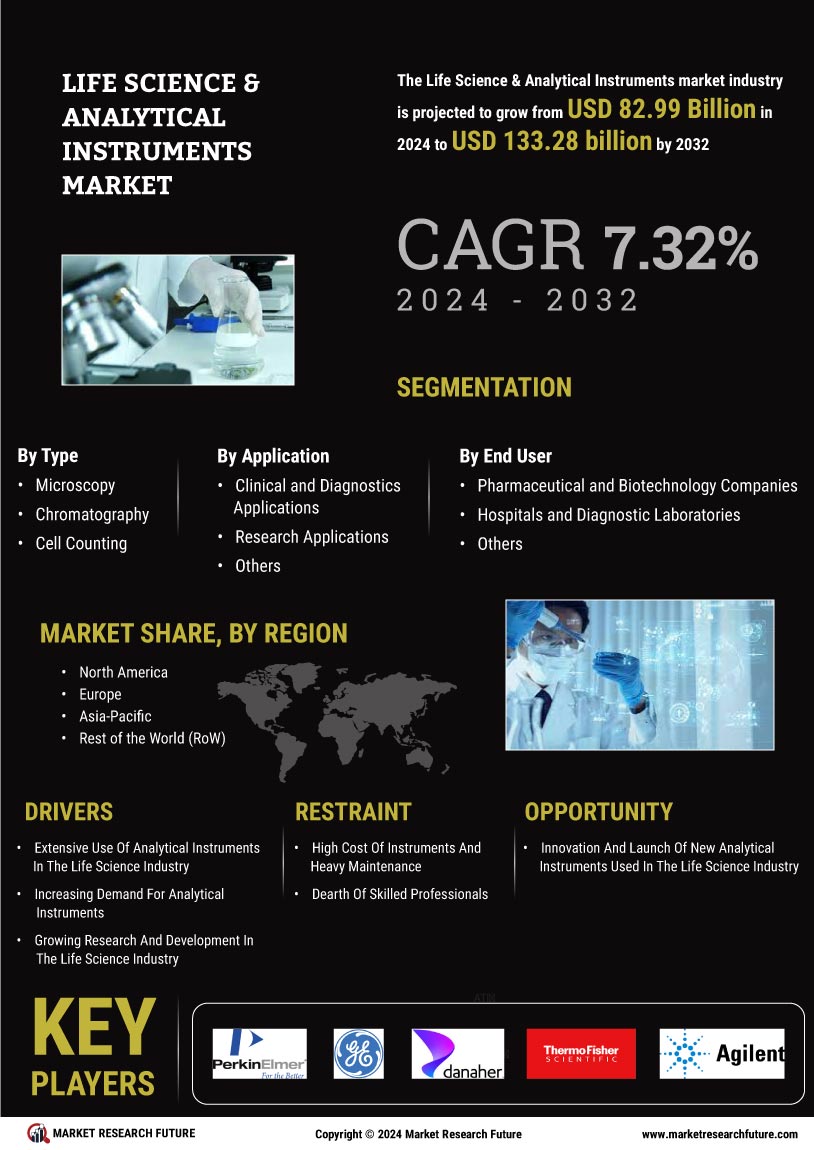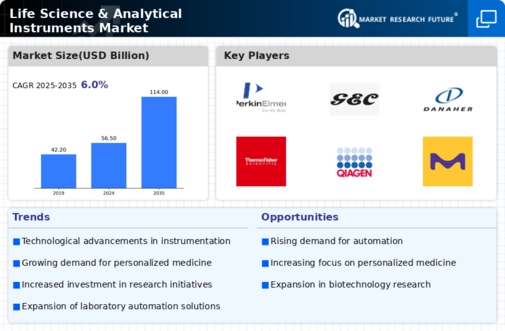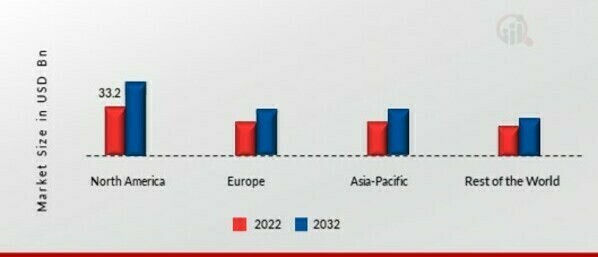Market Growth Projections
The Global Life Science and Analytical Instruments Market Industry is poised for substantial growth, with projections indicating a market size of 56.5 USD Billion in 2024 and an expected increase to 114.0 USD Billion by 2035. This growth trajectory suggests a compound annual growth rate of 6.59% from 2025 to 2035. The expansion is driven by various factors, including technological advancements, increased R&D activities, and the rising demand for personalized medicine. These projections highlight the dynamic nature of the market and the ongoing evolution of analytical instruments in meeting the needs of diverse sectors.
Technological Advancements
The Global Life Science and Analytical Instruments Market Industry is experiencing rapid growth due to continuous technological advancements. Innovations in areas such as high-throughput screening, mass spectrometry, and chromatography are enhancing the capabilities of analytical instruments. For instance, the integration of artificial intelligence and machine learning in data analysis is streamlining research processes and improving accuracy. As a result, the market is projected to reach 56.5 USD Billion in 2024, driven by the demand for more sophisticated and efficient analytical tools. This trend is likely to continue, with the industry adapting to the evolving needs of researchers and laboratories.
Growing Biopharmaceutical Sector
The Global Life Science and Analytical Instruments Market Industry is significantly influenced by the growth of the biopharmaceutical sector. As the demand for biologics and biosimilars increases, there is a corresponding need for sophisticated analytical instruments to support the development and manufacturing processes. Techniques such as protein characterization and stability testing are essential in this sector. The biopharmaceutical industry is projected to expand rapidly, contributing to the overall market growth. The anticipated compound annual growth rate of 6.59% from 2025 to 2035 reflects the increasing reliance on analytical instruments in biopharmaceutical research and production.
Rising Demand for Personalized Medicine
The Global Life Science and Analytical Instruments Market Industry is also being driven by the rising demand for personalized medicine. As healthcare shifts towards more individualized treatment approaches, there is a growing need for advanced analytical instruments that can facilitate the analysis of genetic and molecular data. Technologies such as next-generation sequencing and biomarker discovery are becoming increasingly vital in this context. The market is likely to benefit from this trend, as personalized medicine requires precise and reliable analytical tools to ensure effective patient outcomes, thereby enhancing the overall market landscape.
Regulatory Compliance and Quality Control
Regulatory compliance and quality control are paramount in the Global Life Science and Analytical Instruments Market Industry. Stringent regulations imposed by government agencies necessitate the use of high-quality analytical instruments for testing and validation purposes. Laboratories are required to adhere to Good Laboratory Practices (GLP) and Good Manufacturing Practices (GMP), which drive the demand for reliable and accurate instruments. This regulatory landscape not only ensures safety and efficacy in product development but also propels market growth as companies invest in advanced analytical technologies to meet compliance standards.
Increased Research and Development Activities
The Global Life Science and Analytical Instruments Market Industry is significantly influenced by the surge in research and development activities across various sectors, including pharmaceuticals and biotechnology. Governments and private organizations are investing heavily in R&D to foster innovation and develop new therapies. This increased focus on R&D is expected to propel the market, as analytical instruments play a crucial role in experimental validation and quality control. The anticipated growth in R&D spending indicates a robust demand for analytical instruments, contributing to the market's expansion towards an estimated 114.0 USD Billion by 2035.


















Leave a Comment